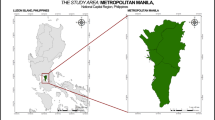Abstract
Indian Earth Observation programme, founded on the basis of self reliance and development catering to the needs of the nation, has come a long way on all fronts of satellite launch vehicles, sensors, data handling, space technology applications and capacity building. Remote sensing applications have grown from mapping of natural resources using hard copy aerial colour and InfraRed photographs in 70s to geophysical parameter retrieval and providing solutions by integrating space technologies inputs from satellite remote sensing, navigation systems and mobile services through satellite communication. Realising the potential of these technologies in nation building, necessary institutionalization and capacity building has been put in place in a structured manner by setting up National Natural Resources Management System and State Remote Sensing Applications Centres, respectively, at Central and State government levels. This invited article deals with the historical development of remote sensing applications to natural resources, providing timely support to disaster management, space inputs for improved efficiency and transparency in governance in addressing the societal needs and the space technology support in South Asian region.







Similar content being viewed by others
References
Navalgund RR, Jayaraman V, Roy PS (2007) Remote sensing applications: an overview. Curr Sci 93(12):1747–1766
Rao DP et al (1997) Integrated Mission for Sustainable Development (IMSD), a synergistic approach towards management of land and water resources. http://www.ncap.res.in/upload_files/workshop/ws5_chapter9.pdf
Chandrasekhar MG, Radhakrishanan K, Jayaraman V, Manikiam B, Honne H, Gowda (2009) Achievements in Remote Sensing applications in India, Geospatial World
Sahai B, Chandrasekhar S, Barde NK, Nagabhushana SR (1977) Agricultural resources inventory and surveys experiment. In: Rycroft MJ, Stickland AC (eds) COSPAR space research. Pergaman Press, Oxford, pp 3–8
Parihar JS, Dadhwal VK (2002) Crop production forecast using remoe sensing data: Indian experience. In: Proceedings of the ISPRS Comm. VII Symposium “Resource and Environmental Monitoring” held at Hyderabad, India, Dec 3-6, IAPRS & GIS, vol 34, Part 7, pp 1–6
Patel NK, Chakraborthy S, Dutta S, Patnaik C, Parihar JS, Moharana SC, Das A, Sarangi BK, Behra G (2004) Multiple forecasts of kharif rice in Orissa state—4 years experience of FASAL pilot study. J Indian Soc Remote Sens 32:125–143
Rao PVN, Ramana KV, Venkataratnam L (1994) Suitability of mutlidate ERS-1 SAR data for crop acreage estimation. In: Proceedings of the 15th Asian Conference on Remote Sensing, Bangalore, India, vol 1, pp A2.1–A2.5, 17–23 Nov 1994
Ramana KV et al (2017) Multi-incidence angle RISAT-1 Hybrid Polarimetric SAR data for large area mapping of maize crop—a case study in Khagaria district, Bihar, India. Int J Remote Sens 38(20):5487–5501. https://doi.org/10.1080/01431161.2017.1338783
Srikanth P, Ramana KV, Deepika U, Chakravarthi PK, Sai MVRS (2016) Comparison of various polarimetric decomposition techniques for crop classification. J Indian Soc Remote Sens. https://doi.org/10.1007/s12524-015-0525-6
Murthy CS, Sesha Sai MVR, Prabir Kumar Das NKM, Chakraborty A, Dwivedi RS (2010) Assessing agricultural drought vulnerability using time series rainfall and NDVI, NNRMS(B), vol 35, pp 63–72
Murthy CS, Chakraborty Abhishek, Seshasai MVR, Roy PS (2011) Spatio-temporal analysis of droughts 2009 and 2002. Curr Sci 100(12):1786–1788
Seshasai MVR, Murthy CS, Chandrasekhar K, Raghavaswamy V (2013) National Agriculture Drought Assessment & Monitoring Systems (NADAMS): Genesis and Way Forward, NNRMS(B)-37, pp 139–145
Murthy CS, Sesha Sai MVR, Bhanu Murthy V, Krishna Murthy YVN (2016) Satellite remote sensing and geospatial technologies for crop insurance, 9th NIA-FAIR International Seminar on Agriculture Insurance, Risk Mitigation for livelihood Security and Sustainable Development, Pune, 24–25 Nov 2016
Venkateshwar Rao V, Sharma JR, Dadhwal VK (2013) Water resources of India—Critical issues and satellite technology option, NNRMS(B)-38, pp 1–9
Sharma JR, Project Team (2013) India-WRIS Webgis design and development of web enabled water resources information system of India, NNRMS(B), vol 13, pp 170–179
Srivastav SK, Bhattacharya A, Kamaraju MVV, Reddy GS, Shrima AK, Mehta DS, List Burger H (2000) Remote sensing and GIS for locating favourable zones of lead-zinc-copper mineralization in Rajpura-Dariba area, Rajasthan, India. Int J Remote Sens 21(7):3253–3267
Martha TS, Kerle N, Jetten V, van Westen CJ, Kumar KV (2010) Characteristic spectral, spatial and morphometric properties of landslides for semi-automatic detection using object oriented methods. Geomorphology 116(1):24–36
Kumar KV, Marth TS, Roy PS (2006) Detection of volcanic eruption in Barren island using IRS P6 AWiFS data. Curr Sci 91(6):752
Ravisankar T, Sreenivas K, Ravishankar G, Fyzee MA, Sujatha G, Rajiv Kumar MRS, Shyamsundar B, Padmarani G (2013) Land resource management and monitoring, NNRMS(B)-37, pp 76–85
Dadhwal VK (2012) Assessment of Indian carbon cycle components using earth observation systems and ground inventory. In: International archives of the photogrammetry, remote sensing and spatial information sciences, volume XXXIX-B8, 2012 XXII ISPRS Congress, Melbourne, Australia, 25 Aug–01 Sept 2012
Jha CS et al (2014) Analysis of carbon dioxide, water vapour and energy fluxes over an Indian teak mixed deciduous forest for winter and summer months using eddy covariance technique. J Earth Syst Sci 122(5):1259–1268
Acknowledgements
Authors gratefully thank their colleagues at National Remote Sensing Centre, ISRO for their valuable inputs and support, without which this manuscript would not have been possible.
Author information
Authors and Affiliations
Corresponding author
Rights and permissions
About this article
Cite this article
Krishnamurthy, Y.V.N., Rao, P.V.N. Indian Satellite Remote Sensing: Focus on Selected Applications and Societal Needs. Proc. Natl. Acad. Sci., India, Sect. A Phys. Sci. 87, 487–502 (2017). https://doi.org/10.1007/s40010-017-0430-1
Received:
Revised:
Accepted:
Published:
Issue Date:
DOI: https://doi.org/10.1007/s40010-017-0430-1




